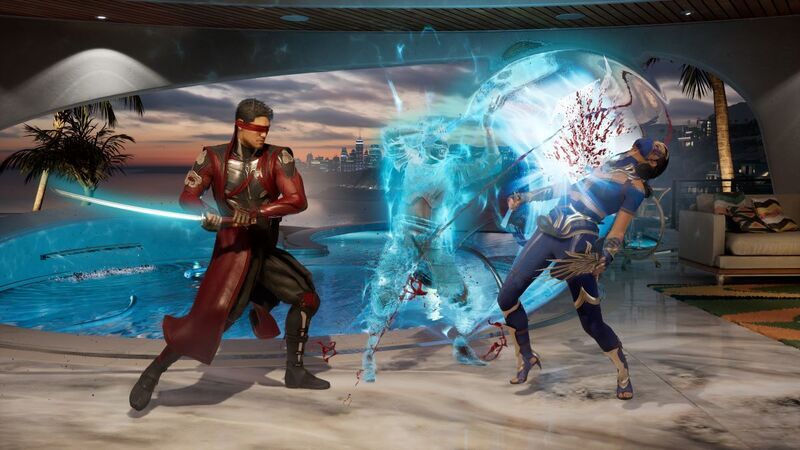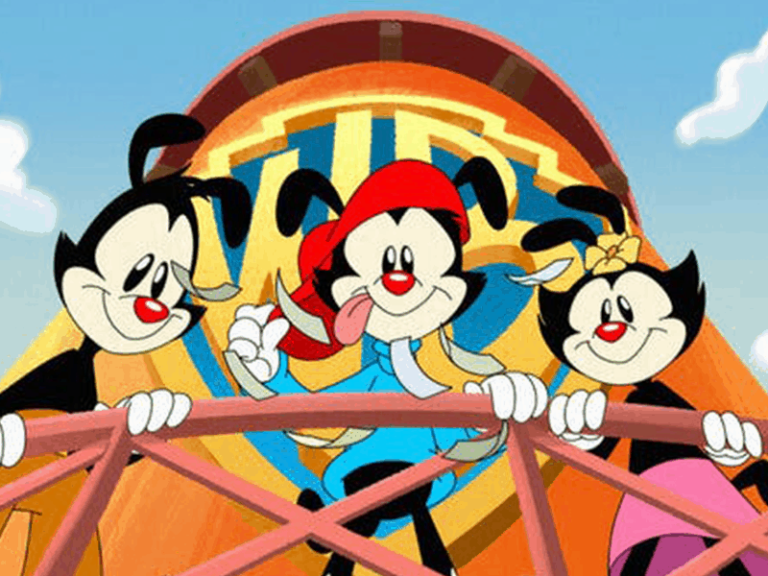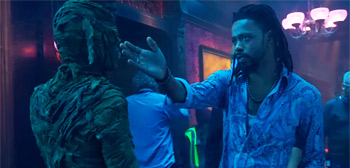Mortal Kombat 1 Continues Legacy of Landmark Fighting Game

It’s interesting that Roger never reviewed the “Mortal Kombat” films, ignoring the Paul W.S. Anderson 1995 film and the dismal 1997 sequel. While the movies based on the 1992 arcade game and its many descendants have been pretty dismal (the 2021 remake is so forgettable that I forgot I reviewed it myself), the games have actually maintained their popularity and even a level of critical esteem that the creators of this mega-franchise probably couldn’t have predicted would be maintained three decades after the first fatality. The newly-released “Mortal Kombat 1” is a phenomenal fighting game, dense with customization options for a beloved cast of characters, complete with various modes to explore, and promising with updates that include future fighters and rotating seasons of content. It’s about to get very crowded on the game landscape with AAA titles like “Spider-Man 2,” “Assassin’s Creed: Mirage,” “Alan Wake II,” and the latest “Call of Duty” game (oh, there’s also a Mario title coming), but I suspect I’ll still be honing my special moves in “Mortal Kombat 1” when the calendar turns over.

Instead of continuing directly after the acclaimed 2019 “Mortal Kombat 11,” the creators of this title revert numerically to “Mortal Kombat 1,” which technically makes this a reboot, although it contains many of the same mechanics as the last title and the excellent “Injustice 2,” also from developer NetherRealm Studios and publisher Warner Bros. Games. The biggest in-fight addition is the inclusion of something called Kameo Fighters, allies for your main competitor who can be brought in during special moves and Fatal Blows, which incorporate the X-ray effect graphics seen in “Mortal Kombat X.” As for modes, the developers include something great called Invasions, which looks like a board game as your fighter enters different modes like combat, towers, and even shops that give the mode a bit of an RPG element. Instead of just mashing buttons, your fighter can use stat-boosting items like Relics or combat-centric items called Talismans. And, to this player, Invasions are the best way to farm customization aspects like new outfits/palettes, gear, and even finishing moves. They will be updated every six weeks or so in a season format, reflecting the live-service game trend that has become so prevalent with regularly updating hits like “Call of Duty,” “Destiny,” “Fortnite,” and so many more. It’s an incredibly addictive mode that brings something familiar but new to a franchise in its fourth decade.
Believe it or not, there’s a story in most modern “Mortal Kombat” games, which basically amounts to extended animated cut scenes intertwined with fights. The narrative here reflects the reboot nature of the game, with Liu Kang recreating the universe to basically try and save it again, allying with Kung Lao, Raiden, Johnny Cage, and Kenshi Takahashi (the sword-wielding badass who has been my favorite fighter so far this game) to compete in a Mortal Kombat tournament for the fate of Earthrealm. From there, it goes to places that wouldn’t conceivably make sense to anyone not deeply versed in the world of “Mortal Kombat,” but know that it’s like watching an animated “Mortal Kombat” movie that you get to jump into every now and then to break up the mediocre dialogue and confusing plotting. It does, however, contain a more fascinating cast list than the 2021 theatrical release arguably had, with Kelly Hu as Li Mei, Megan Fox as Nitara, Phil LaMarr as Geras, and even a skin that can turn Johnny Cage into the one and only Jean-Claude Van Damme. It’s also worth noting that some major DC characters are joining the game in the future as DLC fighters, including Omni-Man from “Invincible,” Peacemaker from the show of the same name, and Homelander from “The Boys,” which could add J.K. Simmons, John Cena, and Antony Starr to this vocal line-up (presuming the get the original actors to do the voice work).

As for the kombat, it’s fluid and wickedly addictive this time, a typical collection of easy-to-administer fighting moves and more complex combos. The result is a game that’s easy to jump into and play if someone only has a few minutes or wants to lose hours. The core of “Mortal Kombat” will always be the actual fighting, and it’s never clunky or glitchy here with consistent physics most of the time—there are some environmental aspects, usually in towers, that can be frustrating to figure out. As for graphics, it looks phenomenal, especially with the detailed backgrounds and adrenalizing finishing moves. Adding Kameo Fighters adds more variety as each brings their own tag-team move. (I’m a fan of Sareena, for the record.) They, too, can be customized with new gear.
“Mortal Kombat” has evolved from that 1992 arcade game to three features, multiple animated spin-offs, and now a dozen official titles in the main franchise. What struck me most about “Mortal Kombat 1” was that this isn’t just traditional nostalgia bait, a reboot of a game that people once loved in the hope that they’ll love it again. The developers of this title have strived to keep “Mortal Kombat” relevant by incorporating season updates, new characters, top-notch fighting animation, fluid controls, and deep customization. Fans of the series would buy anything with that dragon logo on it and playable versions of Scorpion and Sub-Zero, but “Mortal Kombat 1” gives them and the generations below those original fans more than just the bare-bones needed to make a profit. So many franchises have come and gone in the decades since “Mortal Kombat.” This one still has so much fight in it.
The publisher provided a review copy of this title. It’s now available for PS5, Xbox, PC, and Switch (although be warned that the version there is reportedly a glitchy mess).





